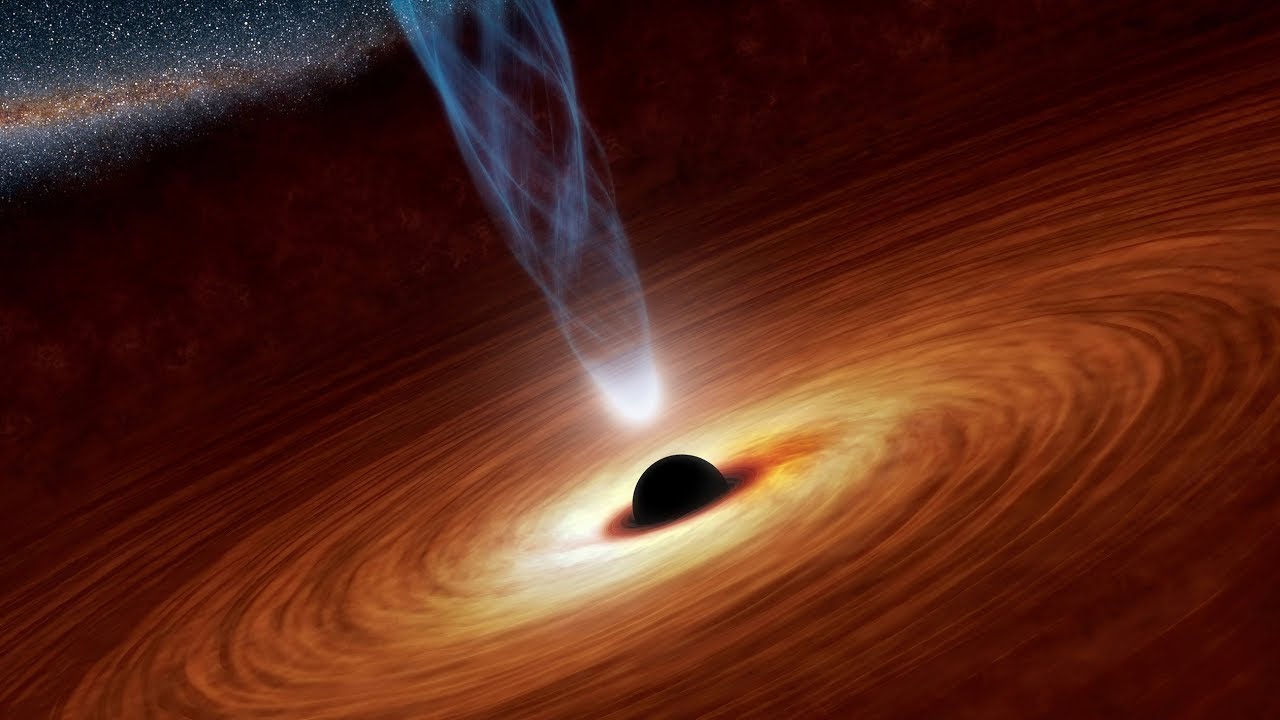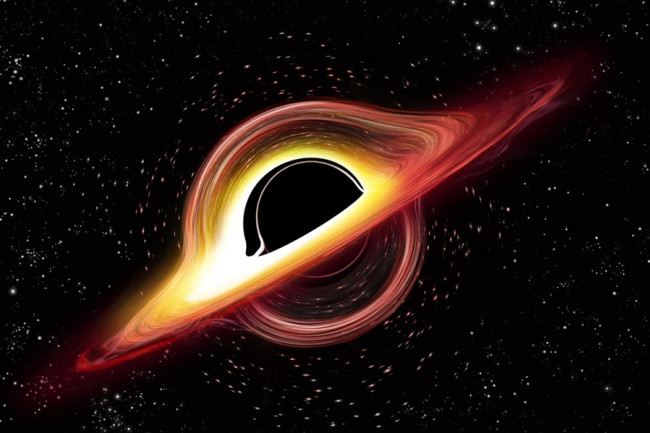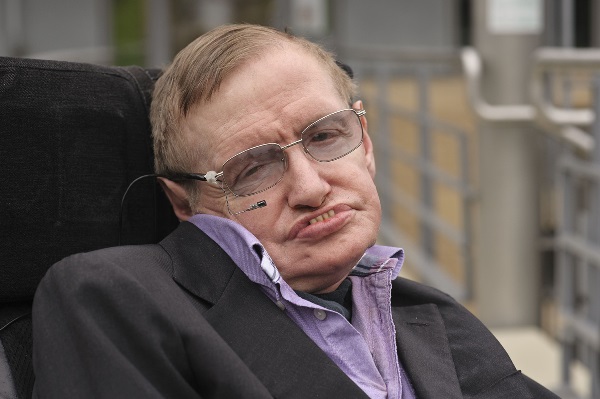Blog: Black Hole Universe

Have you ever wondered how everything started? I do, and so do a lot of scientists. There are even some people who focus their entire career, maybe even their entire lives to try to figure it out precisely. The general idea of the beginning of the universe is mostly agreed upon by most scientists, however, some of the details don�t quite add up the way they should and many scientists disagree on these details. These details include things like the rate of universal expansion and the age of the universe. While the disagreements are not drastic, they are significant enough to show that we are missing some important information about how the universe started and �grows�.
Several years ago, I had a passing thought about how the universe started and how it continues to accelerate in its expansion. Since then, I have refined that thought into an idea (not quite a theory yet) about how The Big Bang happened and at the same time, potentially help explain why things keep accelerating away. In this idea, it is all about black holes.
 A black hole is an object in space that is so heavy, dense and small that it produces a massive gravitational force, which not even light can escape. They gobble up everything, from cosmic background radiation and cosmic gasses to entire stars, and sometimes even other black holes (it�s more of a merge really). They are currently classified into four categories: Micro Black Holes (hypothetical), Stellar Black Holes (collapsed star, most common), Intermediate Black Holes (unknown formation, rarest) and Supermassive Black Holes (Centers of galaxies).
A black hole is an object in space that is so heavy, dense and small that it produces a massive gravitational force, which not even light can escape. They gobble up everything, from cosmic background radiation and cosmic gasses to entire stars, and sometimes even other black holes (it�s more of a merge really). They are currently classified into four categories: Micro Black Holes (hypothetical), Stellar Black Holes (collapsed star, most common), Intermediate Black Holes (unknown formation, rarest) and Supermassive Black Holes (Centers of galaxies).
 Stephen Hawking thought (though somewhat disputed) that over time black holes expel some of their mass as energy: Hawking Radiation. Once enough mass has been �shed�, the black hole collapses and explodes with the energy of the remaining mass. This remaining mass is always the same for any of the current categories of black holes and regardless of the size of the black hole when it started, the resulting explosion has the force of five million megatons of TNT (1000x the force of all nuclear weapons on earth combined). This has not been proven or observed. It is the product of quantum physics math.
Stephen Hawking thought (though somewhat disputed) that over time black holes expel some of their mass as energy: Hawking Radiation. Once enough mass has been �shed�, the black hole collapses and explodes with the energy of the remaining mass. This remaining mass is always the same for any of the current categories of black holes and regardless of the size of the black hole when it started, the resulting explosion has the force of five million megatons of TNT (1000x the force of all nuclear weapons on earth combined). This has not been proven or observed. It is the product of quantum physics math.
My idea starts by adding a new class of black holes to that list, a class FAR larger than supermassive black holes. This class of black holes would have a mass much larger than all the mass in the universe. Another change in what we know of the universe would have to be the universe itself. We currently know of the universe as: all of the stars, planets, moons, asteroids, gasses and radiation (and other stuff) that spewed forth from The Big Bang. I am suggesting that the universe is actually MUCH larger (yes, I know, currently the universe is considered infinite, stick with me here), and that what we currently consider �the universe� is actually just a small corner of everything.
So, what�s in this area around our universe? That new, enormous class of black holes I mentioned earlier. That brings us to the acceleration problem in the theory of how the universe works. What if all of the area around what we call the universe is filled with these universe-sized black holes? They would create gravitational fields all around our universe, constantly pulling, or accelerating our universe apart and occasionally eating up what ever gets too close just like any other black hole would, increasing their mass.
 We now have an explanation as to why the universe is expanding, but that really doesn�t tell us much about how it started. For that, we need to go back to all those unimaginably large black holes all around our universe. I have two potential ideas as to how it could have started. One is that once a black hole reaches a certain size, it explodes, similar to filling a balloon past its limit until it pops. The other option seems a bit arrogant but assumes that Stephen Hawking got it wrong, and the initial size of the black hole does have an impact on the size of the explosion of a collapsing black hole. In either case, the explosion of the universe-sized black hole forms a big bang spreading its remaining contents throughout what we currently call the universe.
We now have an explanation as to why the universe is expanding, but that really doesn�t tell us much about how it started. For that, we need to go back to all those unimaginably large black holes all around our universe. I have two potential ideas as to how it could have started. One is that once a black hole reaches a certain size, it explodes, similar to filling a balloon past its limit until it pops. The other option seems a bit arrogant but assumes that Stephen Hawking got it wrong, and the initial size of the black hole does have an impact on the size of the explosion of a collapsing black hole. In either case, the explosion of the universe-sized black hole forms a big bang spreading its remaining contents throughout what we currently call the universe.
This idea not only helps to explain accelerating expansion and the origin of The Big Bang, but can also account for other anomalies too. One good example is a star in our own galaxy that appears to be older than the universe: Methuselah. That star is estimated to be 14.5 billion years old, where our universe is only about 13.8 billion years old. It is also moving VERY rapidly. While the margins of error for these measurements do allow the ages line up correctly so the star is not older than the universe, you have to push to the very extreme edges of the margins for error for it work out. This star helps to reinforce my idea. It is possible this star was left over from a previous big bang and once our big bang happened, it accelerated the star to its current fast pace. I was unable to find the original article I read on this star (I�ll include it later if I can find it), but Forbes has a pretty good article on it (opens in new tab).
While there are not any facts or observations that directly prove (or disprove, as far as I know) my idea, it is a fun thought that opens all kinds of interesting concepts. There may have been MANY �universes� or big bangs before ours, and there may be many more after our universe is gone. There also could be many �universes� existing in the same space-time. We may never know�